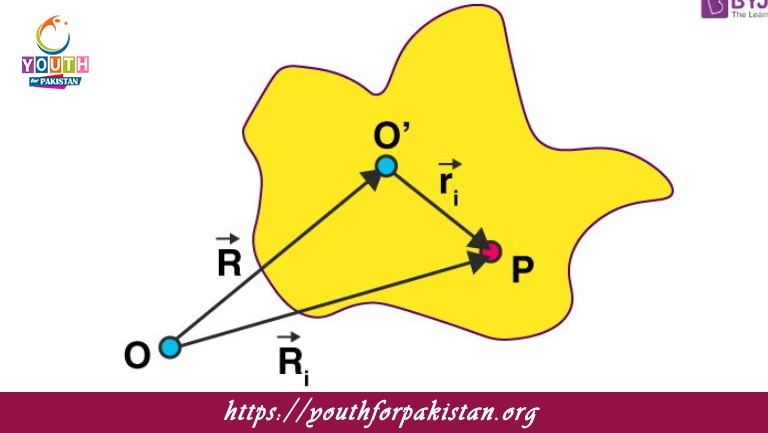Relation Between Linear And Angular Velocities MDCAT MCQs

Welcome to the Relation Between Linear And Angular Velocities MDCAT MCQs with Answers. In this post, we have shared Relation Between Linear And Angular Velocities Multiple Choice Questions and Answers for PMC MDCAT 2024. Each question in MDCAT Physics offers a chance to enhance your knowledge regarding Relation Between Linear And Angular Velocities MCQs in this MDCAT Online Test.
Relation Between Linear And Angular Velocities MDCAT MCQs Test Preparations
If the angular velocity of a rotating object is doubled while the radius remains constant, the linear velocity will:
a) Double
b) Quadruple
c) Halve
d) Remain the same
The unit of angular velocity
ω is:
a) m/s
b) m/s²
c) rad/s
d) rad/s²
For an object moving in a circle, if the radius is increased while the angular velocity remains constant, the linear velocity will:
a) Increase
b) Decrease
c) Remain the same
d) Become zero
In rotational motion, the angular velocity
ω is the rate of change of:
a) Angular acceleration
b) Linear velocity
c) Angular displacement
d) Linear acceleration
If the radius of a circular path is halved and the linear velocity remains constant, the angular velocity must:
a) Double
b) Remain unchanged
c) Halve
d) Quadruple
The relationship between linear velocity
v and angular velocity
ω is:
a) Directly proportional to the radius
b) Inversely proportional to the radius
c) Independent of the radius
d) Equal to the square of the radius
The unit of linear velocity
v is:
a) rad/s
b) m/s
c) m/s²
d) rad/s²
In rotational motion, if the angular velocity is constant and the radius is increased, the linear velocity will:
a) Increase
b) Decrease
c) Remain constant
d) Become zero
If the linear velocity of a rotating object is increased, what happens to the angular velocity if the radius is unchanged?
a) It increases
b) It decreases
c) It remains the same
d) It becomes zero
For an object in rotational motion, if the radius is constant and the angular velocity is increased, the linear velocity will:
a) Increase
b) Decrease
c) Remain the same
d) Become zero
The angular velocity
ω is the derivative of:
a) Linear velocity
b) Linear displacement
c) Angular displacement
d) Angular acceleration
In a rotating system, if both the radius and the angular velocity are doubled, what happens to the linear velocity?
a) Quadruples
b) Doubles
c) Halves
d) Remains unchanged
If the linear velocity of an object is increased and the radius is also increased, the angular velocity will:
a) Increase
b) Decrease
c) Remain constant
d) Become zero
In a circular path, if the linear velocity is constant but the radius increases, the angular velocity must:
a) Decrease
b) Increase
c) Remain the same
d) Become zero
What happens to the linear velocity if the radius is halved and the angular velocity remains constant?
a) It is halved
b) It doubles
c) It remains unchanged
d) It quadruples
The linear velocity
v of an object moving in a circle is given by
=
⋅
v=ω⋅r. If the radius is tripled, what happens to the linear velocity?
a) It triples
b) It doubles
c) It remains the same
d) It increases by a factor of 9
The unit of radius
r in the formula
=
⋅
v=ω⋅r is:
a) m/s
b) rad/s
c) meters
d) rad/s²
If the angular velocity is halved and the radius is unchanged, the linear velocity will:
a) Halve
b) Double
c) Quadruple
d) Remain the same
In rotational motion, the linear velocity
v of a point on the edge of a rotating object is proportional to:
a) The angular velocity
ω
b) The square of the radius
r
c) The angular displacement
d) The angular acceleration
ω
In a rotating object, if the radius is increased by a factor of 2 and the linear velocity remains unchanged, the angular velocity must be:
a) Halved
b) Doubled
c) Quadrupled
d) Remain unchanged
If the radius of a rotating object is halved and the angular velocity is doubled, the linear velocity will:
a) Remain the same
b) Double
c) Quadruple
d) Halve
The angular velocity
ω is given by the rate of change of:
a) Linear displacement
b) Angular acceleration
c) Linear velocity
d) Angular displacement
The formula
=
⋅
v=ω⋅r shows that the linear velocity is:
a) Directly proportional to angular velocity
b) Inversely proportional to radius
c) Independent of radius
d) Equal to the square of radius
If the linear velocity is doubled while keeping the radius constant, the angular velocity will:
a) Double
b) Quadruple
c) Remain the same
d) Halve
For an object in uniform circular motion, if the angular velocity is known and the radius is increased, the linear velocity will:
a) Increase
b) Decrease
c) Remain the same
d) Become zero
If the linear velocity of a point on a rotating wheel is decreased while the radius remains the same, the angular velocity will:
a) Decrease
b) Increase
c) Remain the same
d) Become zero
For an object in a rotating system, if the radius is constant and the linear velocity is tripled, the angular velocity will:
a) Triple
b) Double
c) Remain unchanged
d) Halve
If the radius of a rotating object is doubled and the linear velocity remains constant, the angular velocity will:
a) Halve
b) Double
c) Quadruple
d) Remain unchanged
In a rotating system, the linear velocity
v is directly proportional to:
a) The radius
r
b) The angular acceleration
c) The angular displacement
d) The angular velocity
ω
r
If an object’s angular velocity is increased while the radius is constant, the linear velocity will:
a) Increase proportionally
b) Decrease proportionally
c) Remain constant
d) Become zero
If the radius of a rotating object is tripled, the linear velocity will:
a) Triple
b) Double
c) Quadruple
d) Remain unchanged
In a rotating wheel, if the linear velocity is decreased and the radius is kept constant, the angular velocity will:
a) Decrease
b) Increase
c) Remain unchanged
d) Become zero
If you are interested to enhance your knowledge regarding Physics, Chemistry, Computer, and Biology please click on the link of each category, you will be redirected to dedicated website for each category.




